
11 minute read
Pop Stars
How Bike Life culture has taken off in New York City.
Words MARZ LOVEJOY Photography BEN FRANKE
Jae Milez, born in the Bronx and raised in northern Manhattan, struts his stuff and the spirit of Bike Life culture in Washington Square Park.
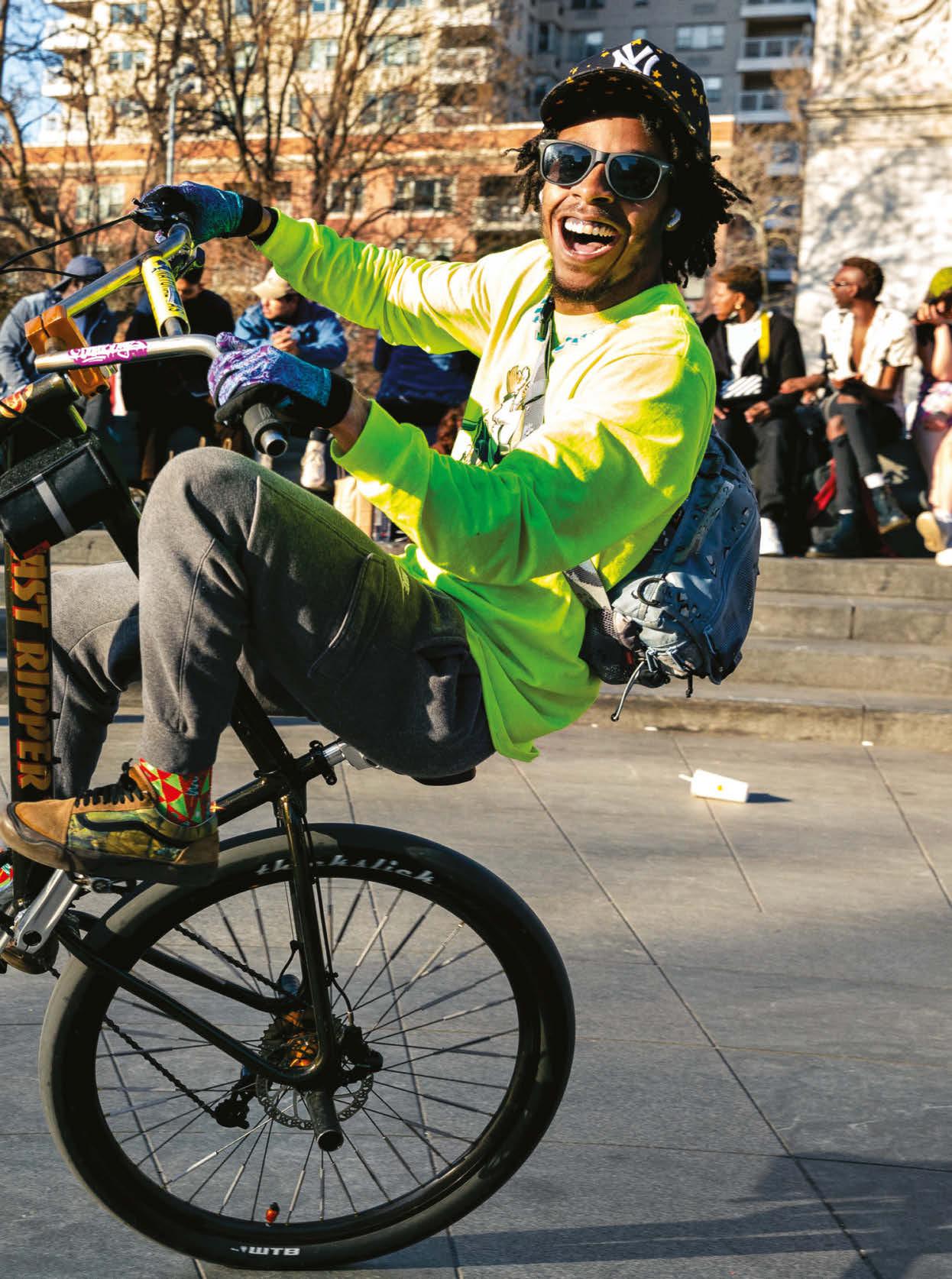
I
f you are from New York City, you may have experienced the thrill of being engulfed by a sea of bike riders. One minute, walking; the next, swimming in young Black and brown men on bikes. They can easily take up a few city blocks. Many of these young men are showcasing a myriad of stunts, ranging from intricate wheelies to standing on saddles. Born in the Fordham neighborhood in the Bronx and raised across the river in Dyckman, 23-year-old Jae Milez rides solely on the back tire of his one-wheel bike. It is exhilarating to witness this impromptu, free, highly entertaining show of extreme talent. As he and his fellow riders take off, you feel their freedom and joy, hear their laughter and genuine love for the athletic and artistic pursuit. You are left full and in awe. You most likely recorded them and silently wondered: Where are they all headed? Where did they come from? Can I join?
And, just like that—poof—they’re gone! Sprinkling another part of the city with their magic.
New York is one of many American cities highlighting and elevating this niche culture. Newark, Boston, Philly, Baltimore, Oakland and Los Angeles are also making marks. Bike Life is a term that embodies both biking and living. It is a subculture born out of pain, then turned into creativity, not unlike other social and culturally related activities. Riders flaunt their talent, continually create new tricks and hone their bike skills. It’s a way of life. One must be passionate about riding, maintain a positive mindset and be serious about having fun.
A small crew of riders take the lanes on the Brooklyn Bridge with the skyline of lower Manhattan looming in the background.

“Life became more fun riding around on one wheel. Every day, there’s a new face I get to put a smile on.” —JAE MILEZ

Though men dominate the Bike Life culture, they certainly are not the only ones ripping through the streets. In the past few years, more women have been joining the pack, turning out wheelies and tricks, riding out with flair and style. Take the rider who calls herself Curly. In 2017, this native Lower East Sider was outside on her block when a few boys rode past with the front tires high above their heads. “It was like destiny,” Curly says. “You know when something is meant for you. Now I’m just focused on keeping my wheel up.”
Curly admits it took a lot of hard work to craft her skills. “At first I was embarrassed, so I practiced alone in a parking lot,” she says. “But I decided to step outside of my comfort zone. This is not just a guy’s sport.”
Artistry takes time and talent. Hailing from the Bronx, Obloxkz, also known as O, has been riding for nearly four years. In his second year of riding, O became sponsored by Throne Cycles, a Los Angeles-based street-bike company. After witnessing O’s talent, one can see why. Zigzagging through traffic, jumping on and off pedals in motion, scraping his hand on the ground while his bike is in a vertical position—Obloxkz clearly has the skill set of a professional athlete. “People judge us from what they see,” he says. “I just wish they respected us like BMX riders.”
Bike Life is becoming more visible, commercial, politicized—and sadly, more policed. The broader issues around social justice and discriminatory policing have impacted the simple act of riding a bike on city streets. To put it bluntly, the data on how often young Black and brown riders are cited and ticketed in New York City is disturbing. According to figures from New York’s Department of Transportation, more than 86 percent of all bike riders ticketed in 2018 and 2019 in the city were Black and Hispanic. Nearly half of all citations were received by riders 24 years old or younger. And Black men got 51 percent of the tickets issued. This hostile climate underscores the need for justice and equitable practices, including those for Black and brown bikers who are women, girls, nonbinary people, in the LGBTQI community or living in impoverished neighborhoods.
I am a Black woman nearing my 30s who has been biking for 10 years.
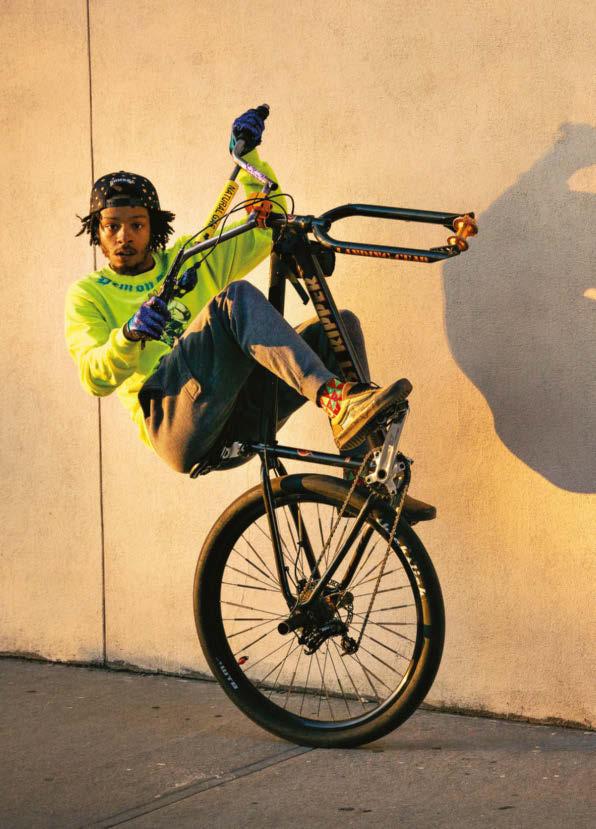
“Bikes unify everyone,” says Milez, 23, an advocate for the Bike Life community who is more committed than average to riding wheelies.
“This is a positive outlet that is much better than any video game or virtual
I understand the risks, fears and trepidation I feel when riding while Black. However, this is how change must happen. Still, discrimination is real and it contaminates every aspect of a culture, and bike culture is hardly immune. In an article examining cycling’s racist, sexist and classist origins, author Taz Khatri itemizes prevalent prejudices of race, sex and socioeconomics in biking history, noting that “cycling clubs explicitly excluded African Americans, Asian Americans, the poor and Native Americans.”
The staggering facts of what it means to be a Black or brown person on a bike only amplifies the need for more accessibility; this access will inevitably equate to social acceptance. In separate interviews, Jae, Curly and O each describe the freedom, comradery and sense of purpose that riding bikes gives them.
Bronx native Obloxkz has a bike sponsor, 18,000 Instagram followers and a reasonable desire to be respected for his talents.
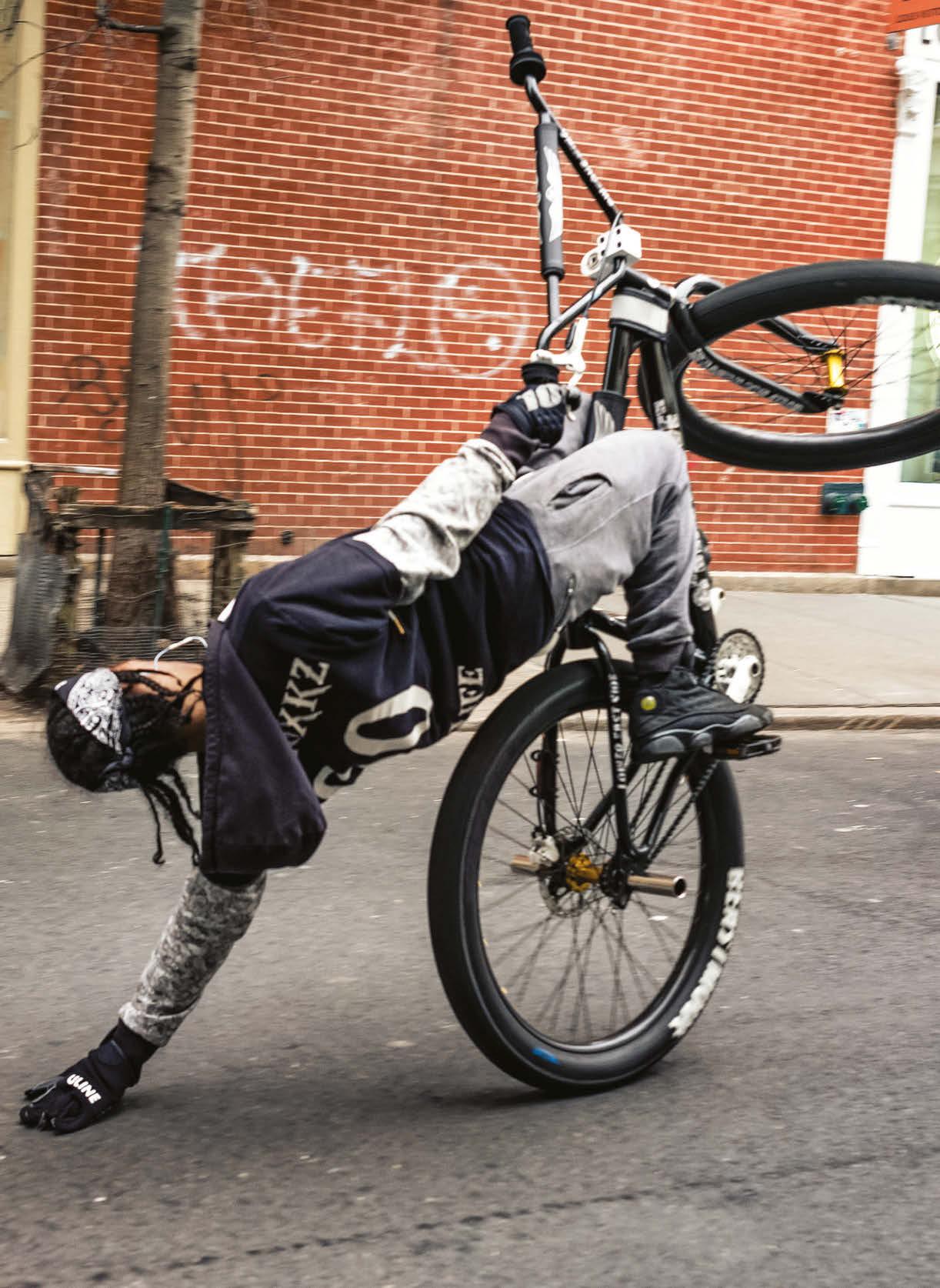
YourBoyFromBK provides some complimentary action for lunchtime patrons in Manhattan’s Soho district.
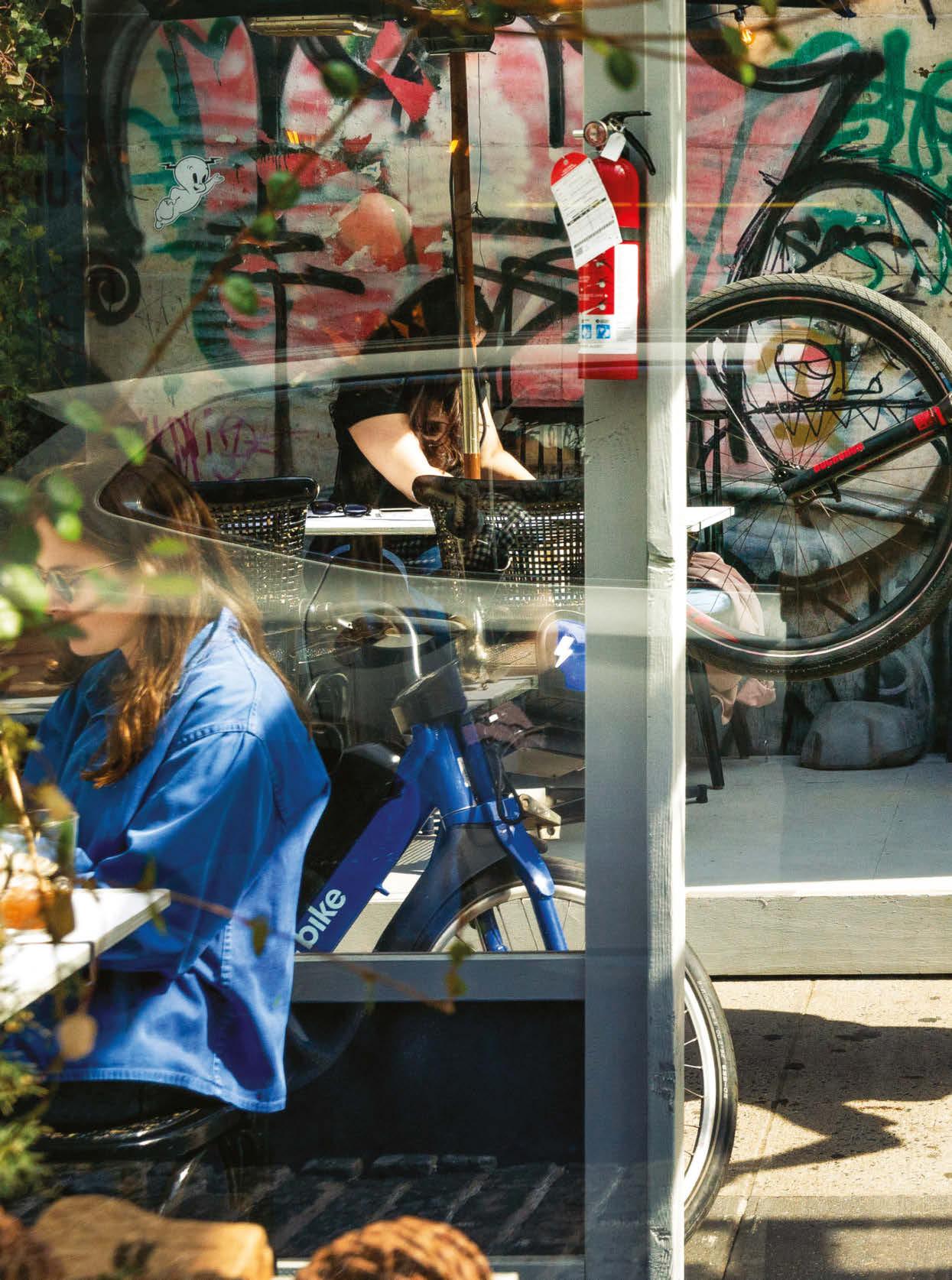
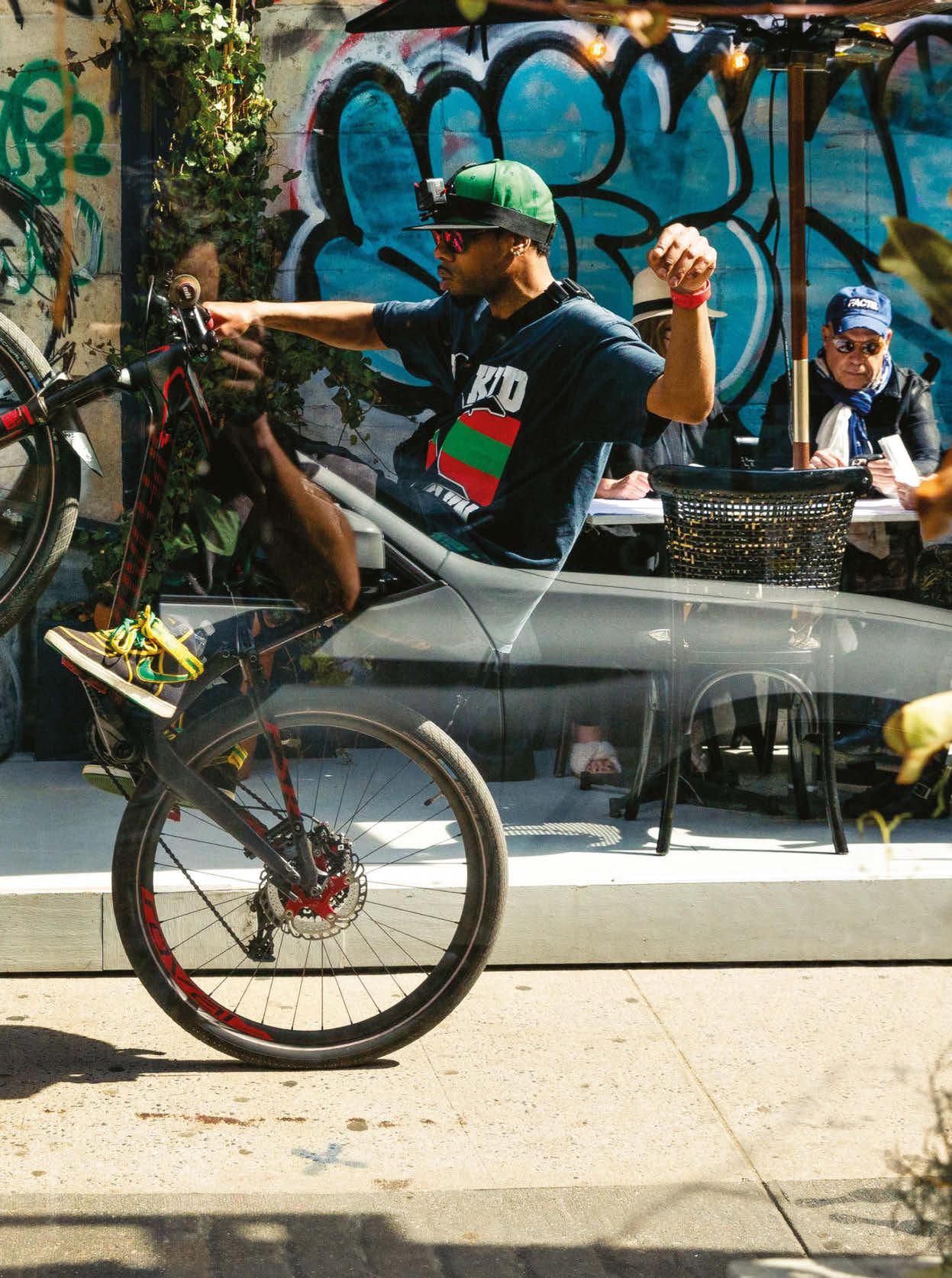

Though Bike Life culture is fueled by individuals with talents and hard-won skills, the lifeblood of the movement is the community of people who share a passion to ride.
“I’ve seen gang members come together without violence, all for the love of riding.” —JAE MILEZ
Jae’s love of Bike Life pushes him to seek change. He supports the idea of indoor bike spaces to practice freely without weather issues, disgruntled drivers or policing. Jae is also talking to the chief of police in his neighborhood, because he understands the politics of it all. “Bikes unify everybody,” he says. “I’ve seen gang members come together with no violence, all for the love of riding. This is a positive outlet that is much better than any video game or virtual reality.” He believes that once the focus is on the benefits, acceptance will show up in the application of public policy supporting biking-related initiatives. Laws and behaviors will follow.
For me, biking was for many years a solo sport. Largely because only two of my friends did it. That all changed in 2016 when I (literally) crossed paths with Q on the streets of New York. My husband and I were riding home from work when we found ourselves swimming in the sea of bikers, willingly and happily becoming (temporarily) a part of their school. I took the opportunity to introduce myself to Q, vice president of Only The Rocketz, a New York-based bike crew. Suddenly, I had a personal connection to Bike Life.
But for everyone who rides bikes, the pandemic changed everything. With normal life disrupted—with fewer people driving, gyms closed and pandemic boredom in full effect— Americans began hopping on bikes in unprecedented numbers. Bike sales in the spring and summer of 2020 were up more than 80 percent over the previous year.
But like so much else in our society, Bike Life culture was shaped by both the virus and the nation’s painful and long overdue reckoning over social justice. It turned my casual passion into something more. As a response to the heaviness of being a Black woman, contemplating police brutality and subsequent grief from the brutal and unjust murders of George Floyd, Breonna Taylor and numerous other Black Americans, I helped launch the first annual ... And Still We Ride ride-out to celebrate Black women. With the help of Q and a slew of volunteers, I orchestrated a large turnout of Bike Life enthusiasts as well as those who have not been on a bike in years. Jae Milez was in attendance and rode 30 miles on one wheel.
This was one of many ride-outs across the country. Around the world, allies rode out in solidarity. The People were galvanized, united and mad as hell, taking their feelings to the streets. Using their bodies as acts of protest. Disease, murder and mayhem pushed folks to spring into action—a bitter sweetness— changing us in one way or another.
Out of tragedy came pockets of light: Budding activists with newfound voices. People turning to community. Marginalized groups mobilizing. And we are still riding out.
But, says O, many young people with little to no means of income struggle to acquire a bike to ride out on. “If I had 100 bikes right now, I’d give them out, easily,” he adds, noting that a good bike can cost anywhere from $700 to $1,000. He enthusiastically expressed working with the private sector to hold bike

Bike Life is more than a sport. It’s a form of expression, an act of protest and passion. For some, it’s a way of life.
“This is not just a guy’s sport,” says Curly, who put in the hours to master her wheelie technique.
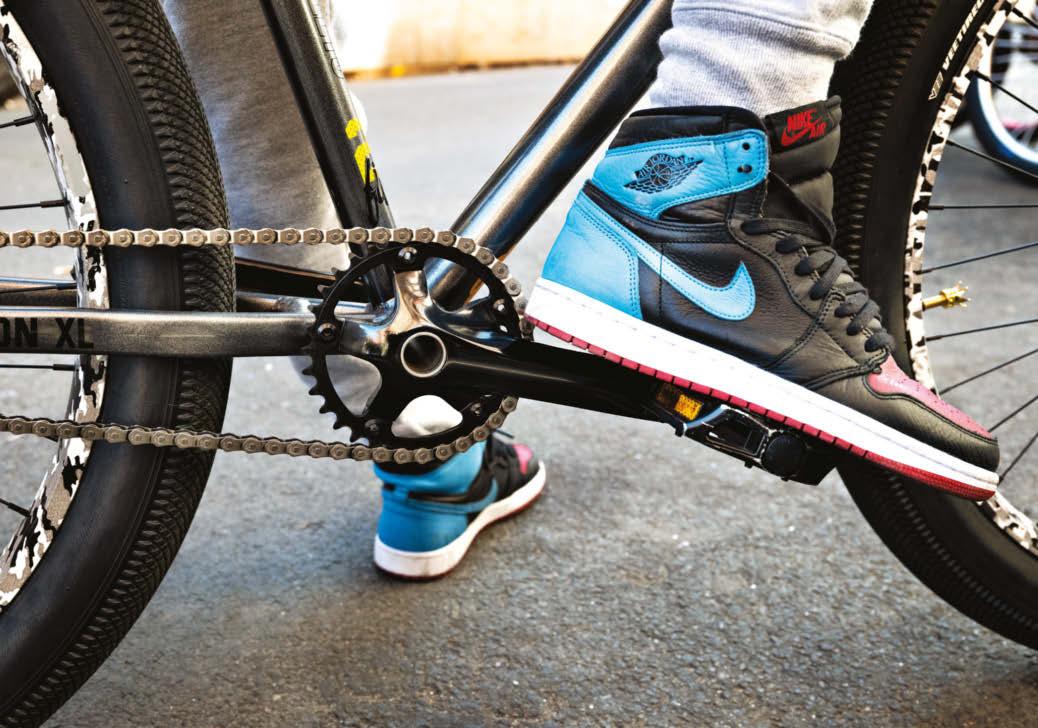
El Arte soars over Luis Banks as the duo messes around in New York’s Chinatown.
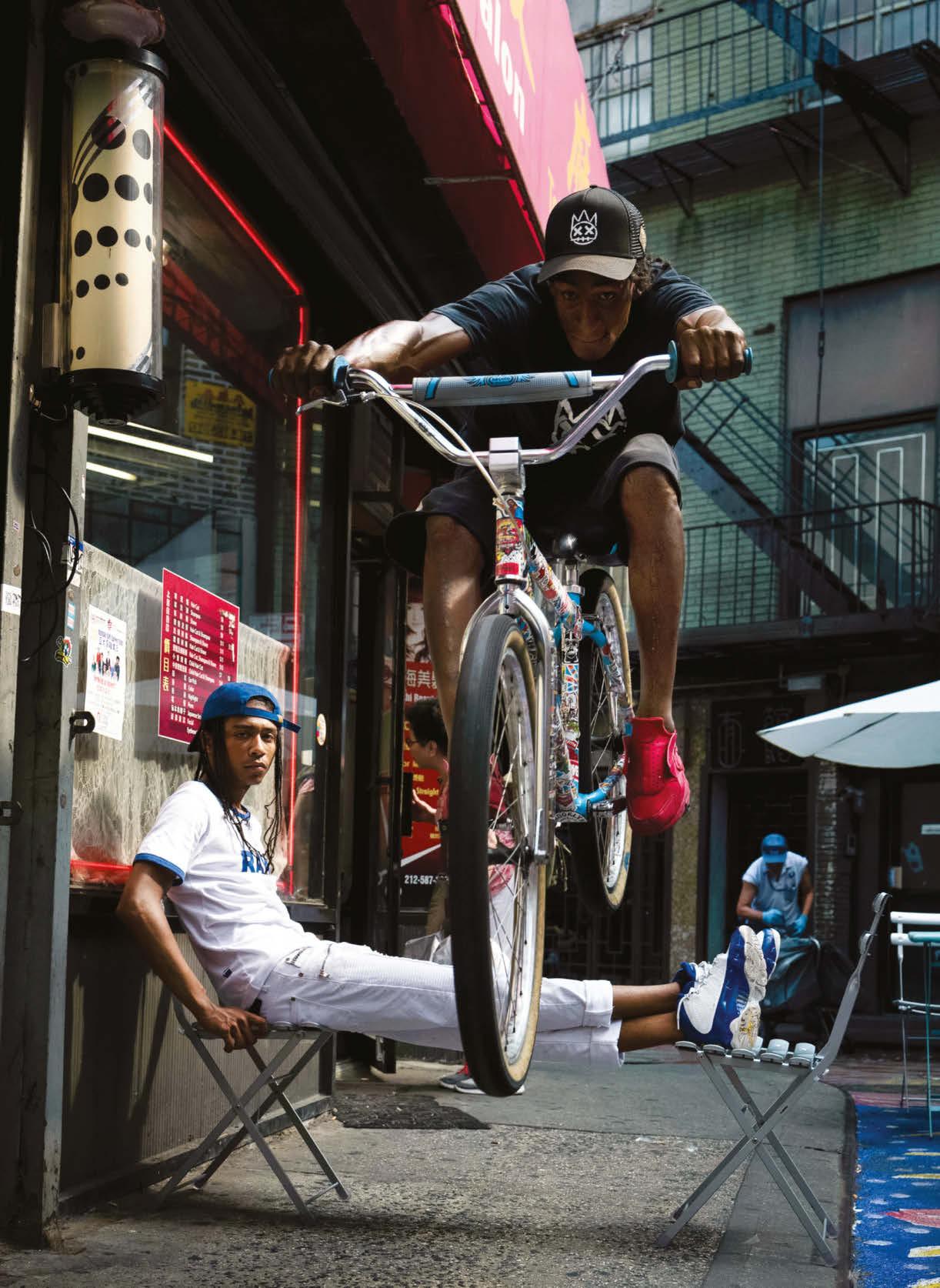

Luis Banks injects some one-wheeled energy into an otherwise sleepy scene in a pedestrian plaza in Midtown Manhattan.
giveaways and host content-creation classes. This is not rocket science—when youth have constructive and engaging outlets, that is where their time and focus will live. But it is not only the cost of bikes keeping youth at bay; it’s the infrastructure in low-income neighborhoods. It’s not easy to build a cycling culture amid so many potholes, on streets without bike lanes or signage expressing the rights of riders to take the lane. Yet these dangerous conditions are the norm in many low-income neighborhoods, when quite the opposite exists in affluent areas. No wonder riders feel the need to take over the streets to feel safe.
I was born in Minneapolis, one of the most bikeable cities in America. I am currently living in Copenhagen, one of the most bikeable cities in the world. In 10 years of biking (mainly in Los Angeles and New York), I have experienced firsthand how there is much to learn from cities that have invested in cycling infrastructure. The cities of Minneapolis and Copenhagen have spent many tens of millions of dollars to improve bikeways, making large and strategic investments to encourage riding.
The investments are already delivering a payoff. In Copenhagen, for instance, residents who ride request fewer sick days, generate significantly less CO2 emissions and save $1.16 in health benefits for every kilometer ridden. The athleticism and artistic expression of Bike Life are profound, but the benefits go deeper and broader than that: a physically and mentally healthier society; reduction of carbon footprints; parking cost and vehicle savings; reduced crime; economic development opportunities; social equity benefits and a focus on quality of life.
Still, so many of the most profound benefits of Bike Life are deeply personal. “To me, biking means community and family,” says Obloxkz. “It’s how we express ourselves. It’s how we bond. Whatever you decide to do, even if it isn’t biking, always dedicate yourself.”
Curly sees it as a kind of active therapy, too. “It frees my mind,” she says simply.
Bike Life is being in the flow of movement—a movement, a culture, a way of life that inspires and promotes positivity and wellness. So when you find yourself within a sea of beautiful bikers, ask yourself, Where can I fit in?
“People judge us on what they see. I just wish they respected us like BMX riders.” —OBLOXKZ
Bike Life standouts Latti Datti (left) and YourBoyFromBK turn the streets of New York into a freestyle clinic in artistry.

Bike Life is being in the fow of movement—a way of life that inspires and promotes positivity and wellness.





